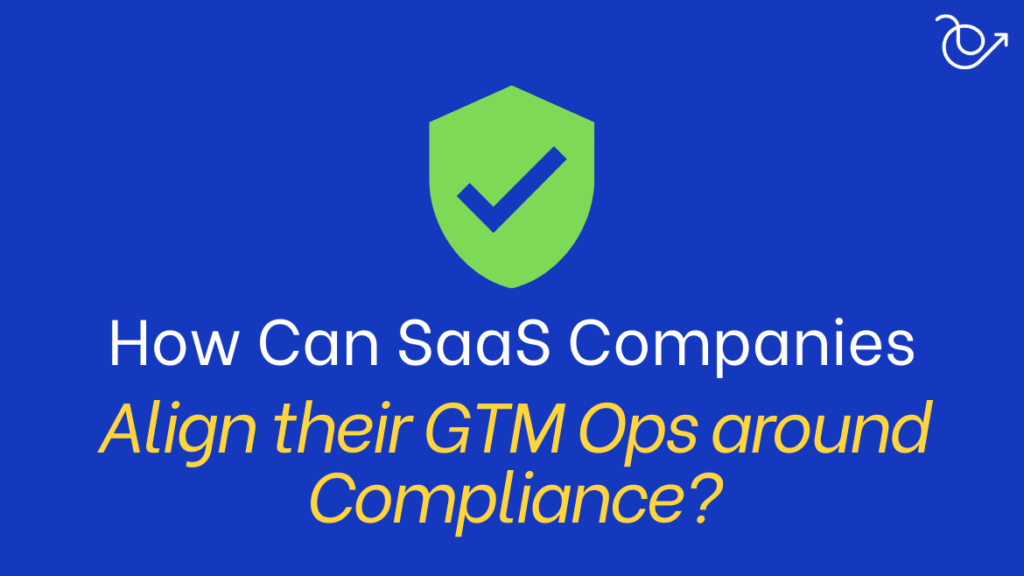Nowadays, SaaS is a core driver of customer trust, and compliance is a major part of that foundation. The rise of regulatory frameworks like GDPR, SOC 2, and HIPAA means that prospects are prioritizing transparency.
Yet despite its critical role, compliance often becomes a fragmented responsibility. When teams work in silos, transparency suffers, opening the door to security gaps and reputational risks.
The solution here is to align different teams around a shared compliance narrative. When marketing, sales, and customer success teams have a shared goal, they can create consistent and trustworthy messaging around your security practices and compliance efforts.
Why Compliance Is No Longer Just a Security or Legal Issue
Compliance used to live quietly in the domain of legal teams and IT departments. But with the evolution of SaaS, it’s now on the front lines. Compliance is a critical brand differentiator for many companies.
Today’s buyers are more privacy-conscious and risk-aware than ever before. A SaaS company that doesn’t show that it can properly manage data significantly reduces its credibility.
The stakes are high, and non-compliance can damage your brand and invite fines. A single misstep can have a significant effect on how existing and future customers view your company, especially in industries where data handling is regulated.
That’s why alignment matters. When teams understand your compliance posture and SaaS data security, your message stays consistent and credible throughout the customer journey.
How to Align Marketing Around Compliance
Each team helps communicate your company’s security posture, but marketing is uniquely positioned to shape the narrative early in the customer journey. When done right, marketing becomes a reason to choose your product.
To align your marketing team around compliance, remember to translate legal jargon into value-driven language. Compliance messaging is either too vague or too technical to resonate. Marketing teams have an important role to play when it comes to translating complex terms into clear, benefits-focused language.
For example, rather than simply stating, “We are GDPR compliant,” marketing can say: “We follow strict European data privacy standards to ensure your personal information is handled with transparency, care, and control.” This reframes the message to emphasize what it means for the customer.
How to Equip Sales to Speak About Compliance
Just as marketing shapes the narrative around compliance, sales teams carry that story into one-on-one conversations. They are often the first line of defense when it comes to addressing compliance concerns. However, the lack of the right tools may result in inconsistent messaging and inaccurate information.
To address this concern, SaaS companies must host regular training sessions for sales teams with compliance and legal leaders. Sales teams need to really understand what compliance means in the context of your product and your customers’ concerns.
Regular training sessions with these leaders help demystify regulations like SOC 2, GDPR, or HIPAA and translate them into real-world implications. These sessions also create space for sales reps to ask important questions and understand the “why” behind your controls. As a result, they become more credible and confident in high-stakes conversations.
How Customer Success Can Reinforce Compliance
Once marketing and sales have set the foundation, it is up to customer success to carry the torch. Compliance isn’t a one-time promise. It’s an ongoing commitment, and customer success teams are responsible for reinforcing that trust at every stage of the customer journey.
One way for customer success teams to reinforce compliance is to communicate changes in the compliance posture. For example, your company has earned a new certification or passed an annual audit. Customer success managers (CSMs) should proactively share relevant compliance updates.
A short message highlighting what changes and what it means for the customer can go a long way in reinforcing trust. It shows that your customer is maintaining your compliance posture while making it easy for customers to stay informed.
In industries like international finance or investment, however, customer success teams must go a step further. They need to understand regulatory frameworks such as FATCA and CRS to guide clients through onboarding and ensure that data-sharing obligations are met from day one.
Best Practices for Cross-Functional Alignment
Now that we’ve seen how marketing, sales, and customer success can each champion compliance, the final step is making sure they stay aligned. Here are some best practices to keep everyone on the same page:
- Create a Cross-Department Compliance Task Force: A dedicated group should meet regularly to coordinate messaging, share updates, and address cross-functional gaps. This helps guarantee that compliance isn’t handled in isolation.
- Use Shared KPIs Tied to Compliance: Tie specific, measurable goals to compliance to drive accountability across departments. These shared KPIs can serve as a gentle reminder that compliance is a driver of business performance.
- Document Roles and Responsibilities: To avoid confusion or duplicated effort, clearly define who owns which aspects of compliance messaging and response. Have a living document that outlines these roles for more efficient collaboration.
- Automate Updates and Alerts for Certification Changes: Use tools like internal Slack alerts and shared calendars to notify relevant teams about certification changes. Automation keeps everyone updated and helps make sure that nothing gets missed.
The Bottom Line
Compliance is no longer just a legal necessity for SaaS companies nowadays. It’s an important part of the brand, sales strategy, and customer experience. When marketing, sales, and customer success teams align around a shared compliance narrative, you build trust faster and create longer-lasting customer relationships.
For SaaS companies looking to grow in a risk-aware market, the alignment between these different departments builds a reputation for reliability, security, and ethical practices.
